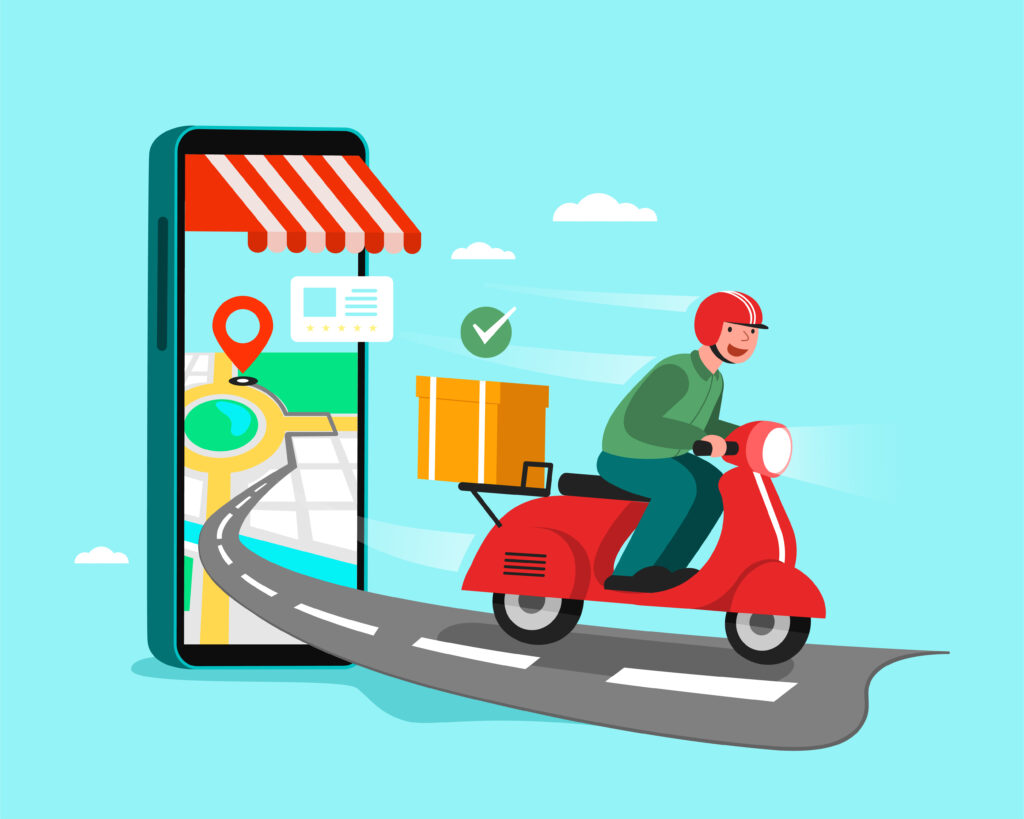Why Last-Mile Delivery Matters for Medical Suppliers
Table of Contents
Introduction
In today’s fast-moving healthcare supply chain, last-mile delivery is more important than ever.
For medical suppliers, getting products to clinics, pharmacies, and labs quickly and without damage is no longer a bonus. It’s a necessity.
Especially for Healthcare MSMEs and small manufacturers, delays in the last mile can mean lost business, expired materials, or unhappy customers.
This final leg of delivery often makes up the most expensive and complicated part of the logistics process.
But the good news? With the right planning, medical suppliers can speed up deliveries, reduce costs, and build stronger relationships with their buyers.
This article will show you how to simplify last-mile delivery using smart tools, better routing, and practical logistics strategies that actually work.
Let’s explore the most common delivery challenges and how your small business can solve them without spending a fortune.
1. What is Last-Mile Delivery in the Medical Supply Chain, and Why Is It Crucial for MSMEs?
Last-mile delivery refers to the final step in the supply chain, delivering goods from a warehouse, distribution hub, or local stockist directly to the end customer.
For medical suppliers, this usually means transporting equipment, devices, or consumables to clinics, pharmacies, diagnostic labs, or hospitals.
Now, why is it so important for Healthcare MSMEs?
Because this stage directly affects customer satisfaction and business continuity. Delays or miscommunication at this point can lead to:
- Missed patient appointments due to late equipment.
- Expired medicines if cold chain products don’t arrive on time.
- Loss of trust and future orders from clinics.
In a competitive market, MSMEs must fulfill small but time-sensitive orders quickly.
Efficient last-mile delivery ensures clinics keep coming back, boosts your brand reliability, and helps grow your revenue without increasing marketing spend.
In short, this final delivery step is where your service quality becomes visible and memorable.
2. What Are the Most Common Last-Mile Delivery Challenges Faced by Small Medical Suppliers in Tier 2/3 Cities?
Medical suppliers in Tier 2 and Tier 3 cities often face serious bottlenecks in their last-mile delivery processes.
These regions have different logistics realities compared to metros, making it harder for Healthcare MSMEs to compete on speed and reliability.
Here are the most common delivery challenges:
1. Delayed Pickups by Local Couriers
Local delivery partners may not follow strict pickup schedules. This causes unnecessary delays, especially for urgent medical supplies like gloves, syringes, or reagents.
2. Vehicle Unavailability
Many small towns lack access to a steady fleet of reliable transport vehicles.
If the delivery van is busy or unavailable, orders may get pushed to the next day.
3. Low Order Visibility
Without a tracking system, clinics and labs don’t know when the order will arrive.
This results in frequent follow-ups, frustration, and sometimes order cancellations.
4. No Live Tracking or POD (Proof of Delivery)
Lack of digital proof or delivery updates affects trust and accountability. It also makes it harder for small manufacturers to manage disputes or offer accurate ETAs.
To solve these issues, suppliers need to adopt basic order tracking tools, partner with regional logistics aggregators, and digitize delivery records.
Better last-mile delivery isn’t just about speed, it’s about building trust with your healthcare buyers.
3. How Can Route Optimization and Local Delivery Partners Help Reduce Delivery Times and Costs?
For medical suppliers, especially in Tier 2/3 cities, fast and reliable last-mile delivery can make or break customer satisfaction.
Missed or delayed deliveries mean lost revenue, broken trust, and poor clinic relationships. That’s why improving this final step of delivery is critical.

1. Use Route Optimization Software
Start by adopting simple tools like:
- Google Maps Route Planner or Zoho RouteIQ – for basic delivery routing.
- Locus, Shipsy, or FarEye – for more advanced logistics automation with real-time traffic data, ETAs, and delivery load balancing.
These tools reduce fuel costs, avoid delays, and increase delivery volume per trip.
2. Partner with Hyperlocal Delivery Networks
Tie up with reliable local couriers such as:
- Dunzo, Porter, LoadShare, Shadowfax
- Or regional delivery aggregators in your city
These partners help cover short distances at low costs, ideal for same-day or next-day deliveries of medical tools and small packages to clinics and labs.
3. Bundle & Zone Deliveries
Group orders based on delivery pin codes. By combining orders from multiple buyers in the same area, you:
- Save on fuel
- Reduce vehicle trips
- Serve more customers in fewer hours
This is especially useful when fulfilling high-frequency consumable orders like gloves or syringes.
4. Offer Delivery Time Windows
Let buyers choose a preferred time slot during ordering. This reduces failed delivery attempts and ensures staff availability to receive the goods at clinics and hospitals.
5. Integrate GPS and Live Tracking for Customers
Allow clinics to track orders in real-time using tools like:
- Delhivery dashboard
- ClickPost
- WhatsApp tracking alerts
This builds transparency and reduces the number of “Where is my order?” calls.
6. Use WhatsApp or SMS for Dispatch Coordination
Small suppliers can’t always afford full-fledged CRMs. Instead:
- Use WhatsApp Business to send shipping alerts
- Automate reminders via tools like Interakt or WATI
This keeps buyers informed without extra manpower.
7. Maintain a Local Inventory Hub
For high-demand zones, maintain a mini warehouse or hub to reduce the delivery radius. This helps reduce travel time and improves your ability to serve urgent orders.
8. Set Delivery KPIs & Review Weekly
Track and improve metrics like:
- Average delivery time
- On-time delivery rate
- Failed delivery reasons
This creates a culture of performance and improves long-term buyer satisfaction.
These low-cost, high-impact solutions help small manufacturers streamline last-mile delivery, reduce costs, and improve trust with healthcare buyers.
4. What Role Does Delivery Tracking Play in Improving Reliability for Clinic and Hospital Clients?
Delivery tracking is no longer optional; it is expected.
For medical suppliers serving time-sensitive orders, especially in clinics and hospitals, visibility is key.
Builds Trust Instantly
When buyers can track where their medical tools or supplies are, they feel in control.
Real-time updates assure them that their order is on the way and eliminate doubts.
This transparency increases trust, critical for long-term partnerships.
Reduces Follow-Up Calls
Without tracking, clinic staff often have to call vendors multiple times:
“Where is my order?”
“Will it come today or tomorrow?”
With live tracking links or WhatsApp delivery alerts, these calls drop significantly.
This saves time for both the buyer and the seller.
Improves Operational Planning at Clinics
If a dental clinic knows their consumables or dental instruments will arrive by 3 PM, they can plan sterilization and patient care accordingly. Estimated Time of Arrival (ETA) enables better resource allocation on the clinic side.
Enhances Reliability Perception
A supplier who provides delivery visibility is seen as professional, reliable, and future-ready. This improves repeat orders and word-of-mouth referrals.
Tools That Help
Small healthcare MSMEs can easily implement this using:
- WhatsApp Business with live location
- Courier partners with live tracking (Delhivery, DTDC, Shiprocket)
- Custom alerts using Interakt, WATI, or Zoho CRM
In short, delivery tracking transforms your service from reactive to proactive.
It builds credibility, lowers communication friction, and increases the likelihood of becoming a preferred supplier for healthcare buyers.
5. Are there tools or platforms available to automate and track medical product deliveries?
Yes, several digital platforms now make it easier for medical suppliers and healthcare MSMEs to automate and track last-mile deliveries without complex setups.
First, tools like Shiprocket and Pickrr offer ready-made solutions for small manufacturers. They allow you to:
- Generate shipping labels
- Auto-assign couriers
- Send live tracking links to buyers
- Get delivery status updates
These platforms integrate smoothly with online stores and inventory systems. For instance, if you’re using Zoho Inventory or Marg ERP, you can connect them directly to automate shipping workflows.
Next, Delhivery plugins provide more advanced control for those handling bulk orders or intercity dispatches.
You can even automate notifications via WhatsApp or SMS to keep clinics and labs informed.
For smaller vendors, simple Excel-to-Shiprocket automation via Google Sheets or Zapier can kickstart the process without full ERP dependency.
In short, using delivery tools not only improves visibility but also reduces manual follow-up, saves time, and builds reliability with your buyers.
Tool Name | Live Tracking | WhatsApp Updates | CRM/ERP Integration | Monthly Cost (Approx.) | Best For |
Shiprocket | ✅ | ✅ | ✅ Zoho, Tally | ₹1,000–₹2,500 | Small medical suppliers |
ClickPost | ✅ | ❌ (Email/SMS only) | ✅ ERP & WMS | Custom pricing | Medium-size B2B distributors |
Pickrr | ✅ | ✅ | ❌ | ₹1,000+ | Low-cost plug-and-play tracking |
Delhivery Dash | ✅ | ✅ | ✅ via API | Custom plan (volume-based) | High-volume lab or hospital runs |
Porter for Business | ✅ | ✅ | ❌ | ₹500–₹1,500 (city-based) | Local clinic deliveries in cities |
6. How Can Small Suppliers Balance Delivery Speed with Logistics Cost Efficiency?
Balancing fast delivery with affordable logistics is a major challenge for medical suppliers and healthcare MSMEs.
However, with a few smart strategies, even small businesses can improve both speed and cost efficiency.
1. Plan delivery slots in advance
Instead of dispatching small orders multiple times a day, group them into time-based delivery slots, for example, once every morning and once in the evening.
This reduces transportation frequency and costs.
2. Use batch dispatches for common routes
Group orders are going to nearby clinics or labs in one trip.
This is especially useful in Tier 2/3 cities where routes overlap.
Apps like Google Maps, batch planner, or Locus can help plan this effectively.
3. Map vendor-to-clinic delivery routes
Create a standard delivery route covering multiple clients in one go.
This saves fuel, time, and manpower while ensuring on-time delivery.
4. Use lightweight, stackable packaging
Choose compact packaging that’s easier to transport in bulk.
It also allows you to use smaller, more affordable vehicles like two-wheelers or compact vans.
5. Leverage local delivery partners wisely
Tie up with hyperlocal logistics (like Dunzo, Porter, or Shadowfax) only for urgent orders. For regular shipments, rely on scheduled delivery batches to save costs.
6. Offer ‘next-day’ instead of ‘same-day’ options
Set realistic delivery expectations for buyers. For example, offer free next-day delivery instead of costly same-day shipping.
7. Monitor delivery performance
Use tools like Zoho Inventory, Shiprocket, or Marg ERP to track delivery delays, average costs per route, and optimize your logistics weekly.
By combining smart planning with digital tools, small medical suppliers can maintain high service levels without overspending on logistics.
Conclusion: Why Streamlining Last-Mile Delivery Matters for Medical Suppliers
In today’s competitive and time-sensitive healthcare market, last-mile delivery can no longer be an afterthought for medical suppliers and healthcare MSMEs.
Whether you’re serving a small clinic or a large diagnostic chain, timely delivery directly impacts your buyer’s trust, order frequency, and overall business growth.
We’ve seen how challenges like vehicle unavailability, lack of tracking, and poor routing can damage your brand. But the good news? Y
You don’t need a big budget to fix it.
Simple strategies like batch dispatching, slot-based deliveries, and using tools like Shiprocket, Pickrr, Delhivery plugins, or even WhatsApp tracking can drastically reduce delays and improve transparency.
The more control you have over your order management and logistics, the more repeat buyers you’ll attract.
Don’t wait for delivery complaints to hurt your business. Optimize your last-mile system now and build a loyal customer base.
Also Read,
- The Ultimate Guide: Working Capital Loans for Small Business (MSMEs) in 2025
Understanding the Impact of Payment Terms on Working Capital for Clinics
How Poor Inventory Management Hurts Working Capital in Pharmacies.
Want a Better Business Credit Score? Small Pharmacies Can Now Use UPI & Cards to Build It
Want a Better Credit Score? Use Small Daily Payments to Build Your CBIL (For Clinics & Pharmacies)
Case Study:How a Small Clinic Improved Its Working Capital Management





